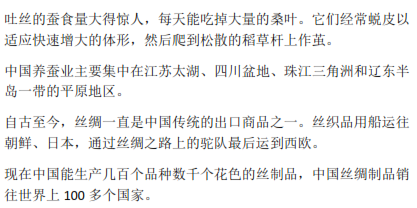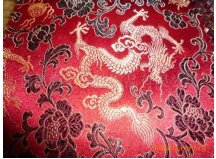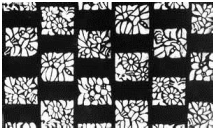5. The Chinese sericulture

Chinese history credits sericulture to Lei Zu---the consort of the mythical Yellow Emperor. Archaeologists have discovered a partially unraveled silk cocoon among the New Stone Age relics unearthed at a site in Shanxi Province.
During the Shang Dynasty (c. 16th~11th centuries B. C.) there were already government-sponsored silk production workshops. By the time of the Zhou Dynasty (c. 11th century~771 B. C.) the production of silk had spread as far as the Hanshui River, Huaihe River and Changjiang River valleys.
The production of splendid silks with subtle designs woven into the fabric and silk decorated with coloured embroidery was soon followed by the invention of silk gauze and brocade silk. By the time of the Spring and Autumn and Warring States periods (770-221 B. C.), silk was manufactured throughout China.
In the Tang Dynasty (618-907) further advances were made in weaving and dyeing techniques, resulting in even more delicate and exquisite products. Since the 17th century Zhejiang Province has become well known for its silk products.
China's geography and climate are good for the growth of mulberry and oak trees of which the leaves supply natural food for two types of silkworms .
The silkworms which produce fine silk have such a voracious appetite that they consume huge quantities of mulberry leaves everyday. They frequently moult or cast their skins to make room for their rapid growth. They then climb to the top of loose stalks of straw and begin to spin the cocoons.
The principal centres of China's sericulture industry are the plains surrounding Taihu Lake in Jiangsu Province, the Sichuan basin, the Zhujiang River delta and the Liaodong Peninsula.
Since ancient times, silk has been one of China‘s traditional exports.
Fine silk products were shipped to Korea and Japan, and carried by camels running along the Silk Route and eventually reaching Western Europe.
Now China produces several hundred varieties of silk in thousands of colours and designs. Chinese silk products have found ready markets in more than 100 countries in the world.
























